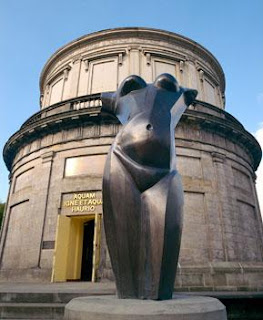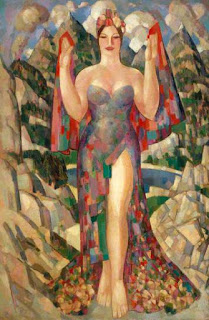Opinion – The Scottish Colourists
Susan Omand sets her artist's beret at a jaunty angle to explain her love for one particular art movement, the Scottish Colourists...
I like a lot of different styles of art and I have a huge variety of prints adorning my walls, from Dali to Mondriaan, Neil Gaiman’s Sandman cover to 18th Century book artplates, 19th century Chinoiserie to a 1980's photo of the New York skyline. All different, all just as valid as art and that’s because...
Oi, come back! I promise I’m not going to get all arty-farty, technical and high fallutin’ about this. Just as I did with my Poetry series on The DreamCage, all I want to do is take the highbrow out of some of the arty stuff that I know about so that you can sometimes give a name to the “I just know what I like” art that you know you like.
OK back to the subject at hand...
As I was saying, I like a lot of different styles of art and I too, just know what I like. One of the most influential for me though has to be the Scottish Colourist movement. These were a group of four painters, Samuel John Peploe (1871-1935); John Duncan Fergusson (1874-1961); George Leslie Hunter (1877-1931) and Francis Campbell Boileau Cadell (1883-1937), all born in Scotland, who used their knowledge of the work and techniques of French artists like Matisse, Monet, Manet and Cezanne, to redefine the Scottish traditional way of painting. Although influenced by these Impressionists (no, not Rory Bremner, the French arty lot that did the dotty, smudgy artwork, like trees, ballet dancers and vague skies and water) and they way they concentrate more on getting across the “feel” (or impression) of a subject using light and colour rather than concentrating on the realism or look of the subject, the Colourists’ style was much stronger in shape and colour, using heavier darker lines and vivid colour to evoke the same emotions as the more hazy impressionists, and they tended a lot more towards the every day for their subjects rather than the more obscure, almost dreamlike ideas of the impressionists. If you look at the era that the Colourists were working in you can definitely see the inspiration of the Art Deco style, especially in Fergusson’s work with clean lines and defined, almost geometric shapes. If you’re not sure what Art Deco is, think about the eagles’ heads on the Chrysler building in New York, the Oscars trophy or most of the statues in Christopher Nolan’s Gotham City and you’ll know the style I mean. The four artists however didn’t work closely together very much during their lifetimes and they only exhibited together three times, each of them developing the basic ideas of the colourists in their own individual methods, styles and approaches, although there is still a strong similarity in their work and in their artistic backgrounds, as well as in their desire to remain “outwith* the establishment”.
In fact my favourite painting is one of John Duncan Fergusson’s and she is very statuesque. Danu, Mother of the Gods, speaks to me on so many levels. The stylised face and pose gives a coldness, an aloofness and inapproachability to someone that should be soft, maternal and nurturing. Likewise the spikiness of the mountains and the jaggedness of the surrounding rocks all scream “keep away”. And yet the colours are all warm colours, welcoming and enticing, as is the voluptuousness of her body which is echoed by the roundness of the clouds in the sky. It’s such a stark contrast in signals that it keeps me confused and intrigued in equal measure as I want to try and understand it. I have been lucky enough to see this painting “in the paint” as it hangs in the Fergusson Gallery in Perth (that's the place in the picture at the top) and, even examining it up close and personal, and it is a HUGE painting, I still haven’t got my head around it and I love it all the more because of that.
Those are just my personal opinions though and I quite understand if the style is “not what you like.” Art is very subjective. There will be things that you like that I don’t, as well as things that nobody really “likes” but that work as art because they provoke a reaction. You wait till I get to my love of modern art installations...
* As an aside it really surprised me to be told that "outwith" is a purely Scottish word. I still haven't found a suitable English equivalent for it that is so succinct.
Images - Perth Museum & Art Gallery, Perth & Kinross Council, via BBC Your Paintings.







Post a Comment